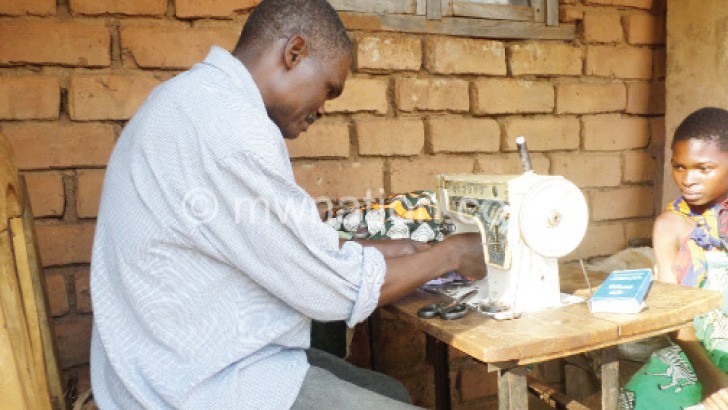Pigeon peas change lives in Mwanza
Like many Malawians, Lucy Nthyoka of Kunenekude grew up producing pigeon peas for food and “sold some for soap”. However, the influx of vendors eager to buy the produce in Traditional Authority (T/A) Kanduku area has prompted her kind to increase production. Since 2000, the farmers have been haunted by low prices though the buyers were reselling the commodity at higher prices in Blantyre.
“Poor farmers were struggling with abject poverty while the buyers were getting richer,” Nthyoka recalls, saying the slavish prices sentenced them to hard labour.
The detested prices set by buyers, coupled with dwindling harvests, scanty market information and poor farming methods did little to lift the growers from poverty.

“Vendors dictated low prices because we did not know what the crop was worth,” says Nthyoka, who often intercropped pigeon peas with maize.
Now the farmers have a reason to smile.
The single mother of three has built a three-bedroom house with corrugated iron roof. She has also acquired other assets including six goats, a mountain bike and runs a tea canteen in her village.
All these are proceeds from pigeon peas, says Nthyoka. Now she wants to buy a two-tonne lorry.
The member of Mwanza Pigeon Peas Market Development, an initiative by Evangelical Association of Malawi (EAM) with funding from Department for International Development (DfID) through Christian Aid, says the blessings are immense.
The project, which strives to improve the economic status of almost 7 000 poor smallholder pigeon peas farmers in Kanduku, Nthache and Govati, offers growers quality and certified seed and brings together marketing groups that have more bargaining power.
Since 2014, the crop often grown for relish has become a major cash crop for many households.
Lloyd Luka of Chibambo Village in Nthache has built a four-bedroom house and bought two bicycles from his annual earnings.
He credits the marketing-group strategy for giving them a voice when negotiating fair prices with the vendors.
“The marketing groups are helping us to realise more from our sweat. Vendors have no chance and our living standards are improving,” he says.
Just like that, the prices have almost tripled from K170 per kilogramme to K500.
As the prices are rising, so are the yields.
EAM has introduced a new variety, Mwaiwathu Alimi, which the farmers find high-yielding.
Donkeni villager Sebastian Chizula, who has bought three pigs and 26 iron sheets for his house under construction, says the use of new seed and pesticides has improved yields.
Some farmers are using their earnings to achieve food security as nearly 6.5 million Malawians face food shortage.
In Nthache, Francis Mvula and Elia Alufeyo of have bought two tonnes of maize in readness for the lean period and seven bags of fertilizer for the fast-approaching growing season. In this way, they have weaned themselves from the State-funded Farm Input Subsidy Programme (Fisp).
Makumeni Chidzamtulo, who now owns a sewing machine and carpentry tools to grow his incomes, spoke of enormous gains.
“Before the project, we sold the produce at a loss. But these two years, our livelihoods are getting better. Our lives revolve around pigeon peas proceeds: the house, solar panel, television, goats, chickens and others,” Chidzamtulo said.
EAM regional manager James Kalikwembe termed pigeon peas as a hidden treasure.
“The crop is becoming a major foreign exchange earner and farmers have to reap enough from their sweat. Vendors exploited farmers when they sold their produce individually. Now, the growers are equipped with technical information on harvesting and post-harvest handling practices that maintains the high quality of the crop throughout,” he says.
Equally life-changing is enhanced access to profitable and secure markets.
“We conducted meetings bringing together producers and buyers and took Auction Holdings Commodity Exchange (AHCX), Grain Securities and other buyers to open selling points in Mwanza,” he explained.
Estimates show Pigeon peas production in Mwanza has risen from 500 kg to 1 200 kg per hectare.
The project phases out next month. According to EAM project officer Amos Bandawe, nine cooperatives have been formed to add value to the produce. They target export market to increase profit.
“It is possible for pigeon peas production to be a commercial venture that can change lives of smallholders farmers like here,” he says.n





